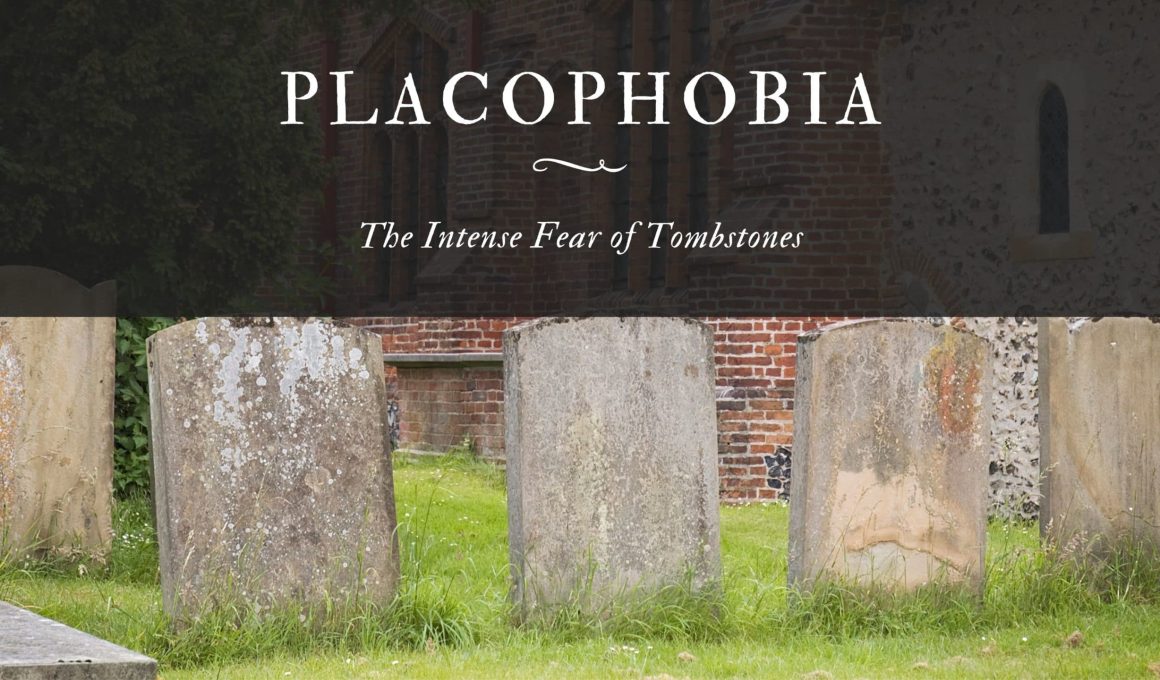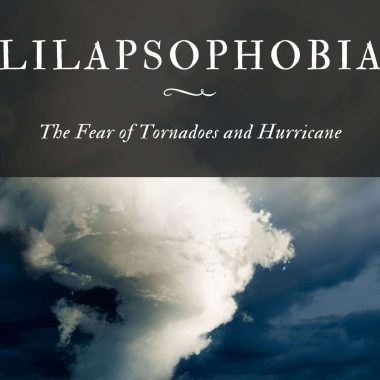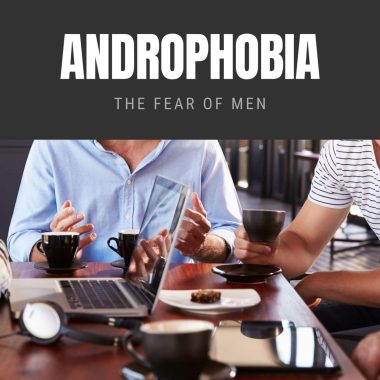Different people have different fears. While some fears are considered to be general fears, others are considered to be specific phobias.
One such specific phobia that we would love to explore today is placophobia. Placophobia is the irrational fear of tombs and graves. As unusual as this fear may sound, many people have this phobia.
According to research, about 30% of people battle this fear daily. Placophobia is often related to some other phobias such as thanatophobia (fear of death), coimetrophobia, or koimetrophobia(meaning the irrational fear of cemeteries), necrophobia(fear of dead things or corpses), taphophobia(which is the fear of being buried alive).
Anyone who suffers from placophobia will do their best to stay away from tombstones, funerals, and anything that has to do with burial ceremonies.
Often, a person who suffers from placophobia can develop severe anxiety attacks from just the mere thoughts of tombstones, let alone seeing them in reality.
In some cases, a person who has developed placophobia can have full-blown panic attacks when thinking about or seeing tombstones.
However, although it is not in all cases, some of them can’t handle the thought and will likely have panic attacks when confronted with their fear.
Some of the likely symptoms of people who have panic attacks due to placophobia include rapid heartbeats, increased heart rates, increased breathing rates, racing pulses, increased blood pressure, strained muscle tensions, and excessive sweat production, among others.
Like other phobias, people suffering from placophobia will go to great lengths to avoid their fears. Often, they go to extreme lengths to ensure that they are not exposed to tombs or graves in any way.
No matter who dies or how close a relationship they once shared with that person, they will ensure that they don’t participate in that person’s funeral ceremony.
In some cases, people dealing with placophobia will avoid cemeteries even though they aren’t required to enter inside.
If they are driving and have to pass through a cemetery, they would rather avoid that route, even if it means taking a longer route than driving by a graveyard. For people who suffer from placophobia, their main cause of mental anguish is their excessive worry and irrational way of thinking.
People with this condition often believe that avoidance will help them cope better and help them reduce the chances of having any panic or anxiety attacks.
However, in the long run, they end up worsening their condition by increasing the symptoms of placophobia that they experience.
Causes of Placophobia
Just like other phobias, placophobia has no known cause. However, according to research, many psychologists believe that placophobia is often a result of a combination of two different factors, namely;
Genetic Factors
Every human is made up of genetic components. Genes define us and make us unique as humans. However, some parts of our genes are gotten from our parents.
Hence, it is entirely possible for us to inherit some of our attributes, including some of our fears, from our parents.
According to research, most people who have presented with certain specific phobias, including placophobia, have had parents who have dealt with one mental disorder or another.
Hence, it is safe to say that if your parent or family member has had an anxiety disorder, then you are at a higher risk of developing placophobia.
However, it is essential to note that although you are at a higher risk of developing a phobia, you may likely end up developing a different phobia than that which your parent or a close relative had.
For example, if your parent had a phobia such as levophobia, you might end up developing a phobia that is different from theirs, for instance, placophobia.
Environmental Factors
Most times, people who already have the genetic predisposition of developing placophobia may end up not displaying that trait if there are no triggers around.
Generally, before a genetic marker is manifested, there has to be an adequate trigger to set that gene in motion.
In the case of placophobia, a person who already has that gene, which then goes on to have a traumatic experience strong enough to trigger the expression of that gene, will go on to develop placophobia.
Several triggers can result in the expression of that gene. They include;
The Patient’s Upbringing
Patients who have been raised by a set of people who have intense fears of tombstones can trigger the expression of placophobia in them.
In other words, if your parents or guardians have an irrational fear of tombstones, such that they always feel uncertain and in danger whenever they see a graveside, they can easily pass on this fear to their wards.
In the long run, the child develops placophobia, which becomes fully evident as he or she grows.
Past Experiences
It is often said that the mind never forgets an experience that happens. A person can go on to develop placophobia following a past traumatic experience he or she had or following a one-time event that occurred and was said to the patient.
Symptoms of Placophobia
As it is seen in almost all phobias that exist, a person who has placophobia will most likely show signs of anxiety and panic attacks, especially when they are close to their triggers.
As we have mentioned beforehand, some patients may begin to show extreme anxiety symptoms that can eventually result in a full-blown panic attack.
It is important to note that not everyone will develop panic attacks. Also, depending on how severe the panic attack is, some patients may need to be hospitalized before they feel better.
However, many factors will determine whether the patient needs medical assistance.
One of the striking signs that will tell you that a person has developed placophobia is avoidance.
When a person is dealing with any phobia(in this case, placophobia), most times, they always tend to try to avoid their fears.
Most times, this may mean that they will ensure that they don’t come in contact with their fears in any way.
People who suffer from placophobia may have two different forms of symptoms: Physical and Psychological symptoms.
Physical Symptoms
Most people who suffer from placophobia often experience panic attacks, which can be very distressing and frightening when they have such experiences. Sometimes, these symptoms show up without prior warning.
Usually, the patient may not even need to be near the trigger before experiencing a panic attack; the mere thought of tombstones and graveside is enough to trigger a response from them.
Some often think that panic attacks aren’t a thing; however, sadly, they are.
A panic attack can trigger real physical responses such as;
- Intense sweating
- Tremors and trembling
- Chills or hot flushes; some may experience them sequentially.
- Difficulty in breathing or shortness of breath
- Feelings of being choked
- Tachycardia, which is often characterized by rapid heartbeats
- Racing pulse rates
- Chest angina which is characterized by pains and tightness of the chest
- Feelings of butterflies in the stomach
- Nausea
- The uncontrollable urge to vomit
- Dizziness and severe headaches, which often progresses
- Feeling faint
- Pin or needle sensations in the hands and legs
- Occasional numbness in both hands and legs
- Dry mouth
- Feelings of having to use the toilet continually
- Ringing in your ears
- Inability to think straight
- Disorientation and confusion
- An increase in blood pressure
- Sometimes, an increase in body temperature
- Hyperventilation
Psychological Symptoms
For some people, in addition to the physical symptoms that they usually experience, they might experience psychological symptoms. Some of these symptoms include;
- Fear of having to lose control
- Fear of dying
- Feelings of dread
- Fear of the unknown
- Fear of fainting
- Feelings of guilt, self-blame, and shame
- Difficulty in concentrating
- Irritability, mood swings, and Anger
Treatment of Placophobia
Many people who suffer from placophobia often think that they don’t need treatment. This is because they feel they are okay once they can avoid their fear.
However, they don’t realize that avoidance is only a quick fix and not a permanent solution to their anxiety.
Sometimes, avoidance may seem like you are in control of the situation; however, there are moments when avoidance won’t be enough or possible anymore. Hence, you must seek professional help when it is possible.
Seeking professional help isn’t a sign of weakness, as you may think. It is a sign of strength and courage to manage your emotions better.
It merely means you are ready to understand why you feel, behave, and act as you do.
Although most phobias, including placophobia, are curable, however, there are no laid-down treatment guides for all the phobias available for you to follow.
In other words, the treatment of placophobia is highly dependent on the person who has the condition as well as its severity.
In most cases, a combination of treatments is often carried out. However, it is essential to note that no treatment option should be done on your own without the supervision of a healthcare professional.
You must consult your doctor before using any of the treatment plans below. This article is strictly for information purposes and shouldn’t be used as a treatment guide.
Different treatment options can be used in treating phobias; however, three options are mostly used by psychiatrists, especially when treating placophobia. They include:
Talking Treatments
Talking treatment, or talking therapy or counseling, involves a one-on-one discussion with a seasoned and trained professional about how you think, react, and act in response to your triggers.
Therapies are often classified as laid-back treatments and are usually physically non-intrusive.
There are many types of counseling sessions and talking treatments, but they all aim at doing the following:
- It helps you understand yourself better and also make sense of things.
- This will help you take note of all the unhelpful patterns in your actions, thoughts, and behaviors and find ways to correct them.
- It can help you recognize and resolve all uncomplicated feelings you may have, and if they can’t be fixed, help you find ways to live with them.
- Provide a safe place and time to talk to someone you know who can help you and won’t judge you.
As mentioned earlier, there are different types of talking therapies; however, when it comes to the treatment of specific phobias, especially placophobia, therapists often employ the use of two types of therapies as they have been seen to be effective over time. They include;
Cognitive Behavioral Therapy (CBT)
Cognitive Behavioral Therapy is often based on the concept that our behaviors are constantly influenced by what we see and perceive.
Anxiety, distress, and fear have the power to distort and rearrange our perceptions about reality such that we have a bent view of what reality is supposed to be like.
In other words, for people who suffer from placophobia, what they perceive as reality isn’t necessarily the reality, hence their increase in anxiety levels.
Cognitive Behavioural Therapy seeks to help the patient see that his view of reality isn’t the correct view that there is.
Once the patient can see other aspects of reality (using the correct lens), it is not difficult to convince him or her of his or her false reality.
CBT aims to identify the patient’s false reality and help them change their thoughts and views of their fears, in this case, placophobia.
Exposure Therapy
Exposure therapy is usually done after Cognitive Behavioural Therapy. It is often based on the understanding that whatever a person constantly engages with will, in the long run, not harm the patient.
People who have placophobia will often like to think that tombstones can somehow harm or react to them and would love to avoid such places.
However, in exposure therapy, the patient is gradually introduced to his or her fears in a controlled environment, allowing the therapist to walk them through their fears and show them that they are nothing more than a distorted reality.
The Use of Medications
Generally, medications are never recommended as the first step to treat phobias. In fact, it should be noted that drugs don’t treat phobias; instead, all they treat are the side effects of phobias, which are depression and/or anxiety.
Therapies are usually what is needed to help a patient overcome placophobia. However, in cases where the therapists detect certain side effects such as depression or anxiety, he or she may prescribe the following;
- Beta-blockers
- Antidepressants
- Tranquilizers
These three classes of drugs help in dealing with the side effects of phobia. However, it is essential to understand that one must never use these drugs unless one therapist prescribes them else; one may become dependent and addicted if they are taken without control.
Self-help
One of the most manageable groups of patients to treat are those who know that they have a problem, want to solve it, and are willing to do all that it takes to solve it. Knowing that one’s mental state is also part of your general well-being is essential.
As such, you must be intentional about caring for your health and controlling your phobia of tombstones. Doing this helps you quickly overcome placophobia and any other phobia that may arise shortly.









